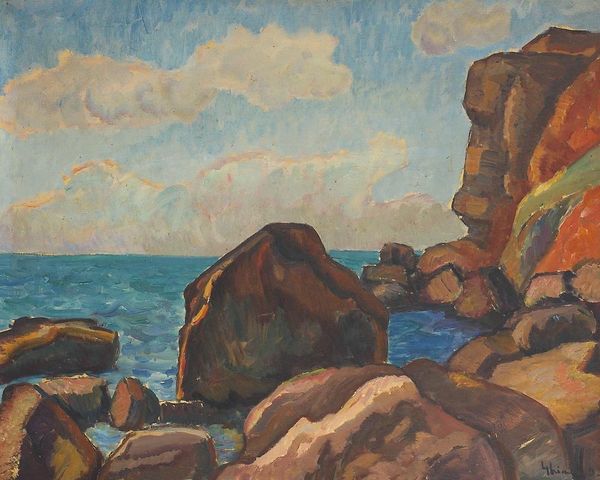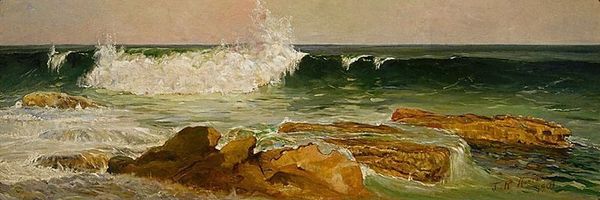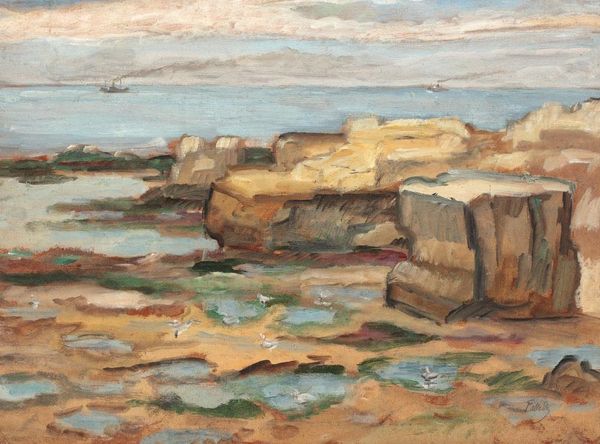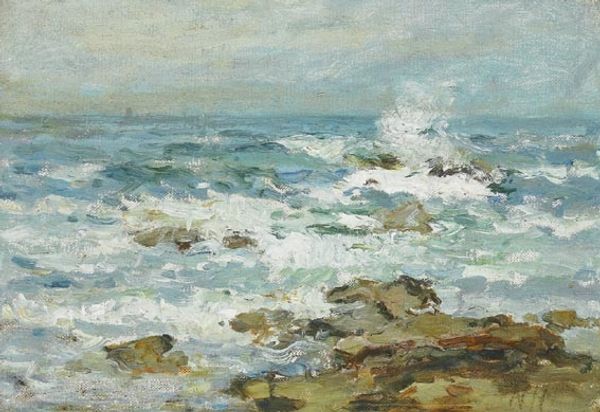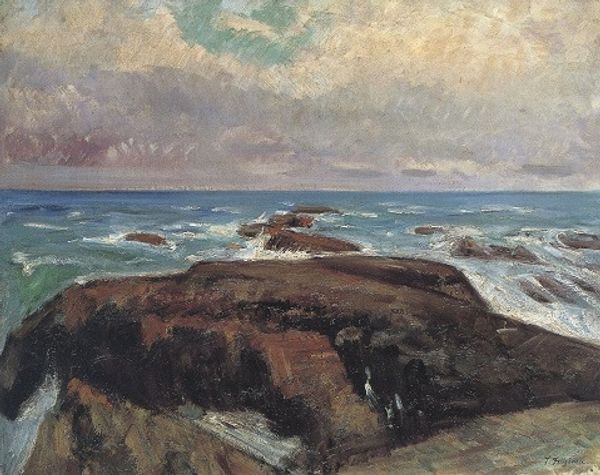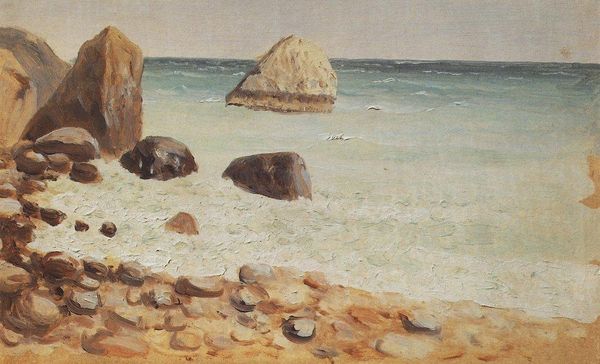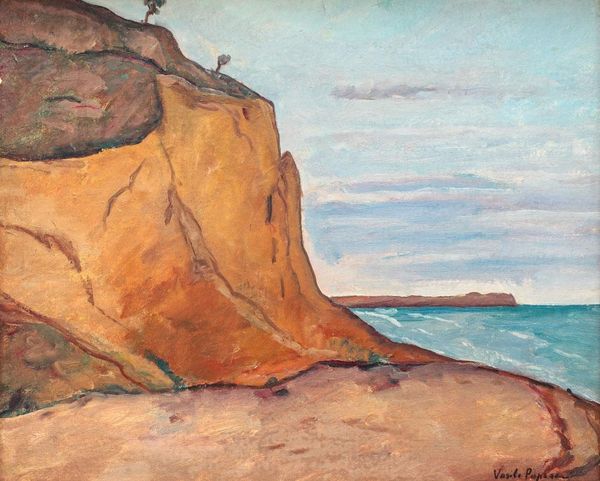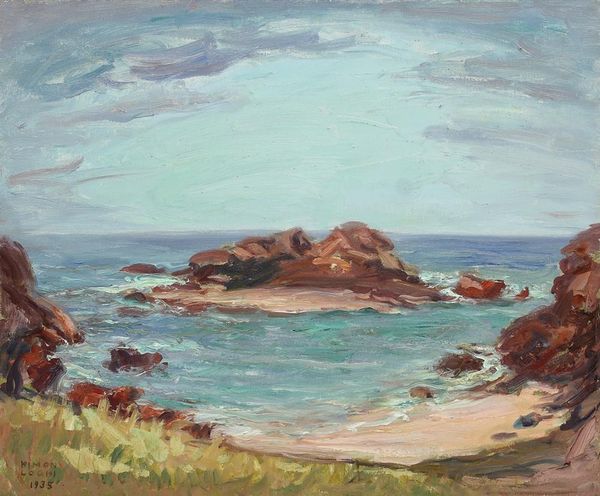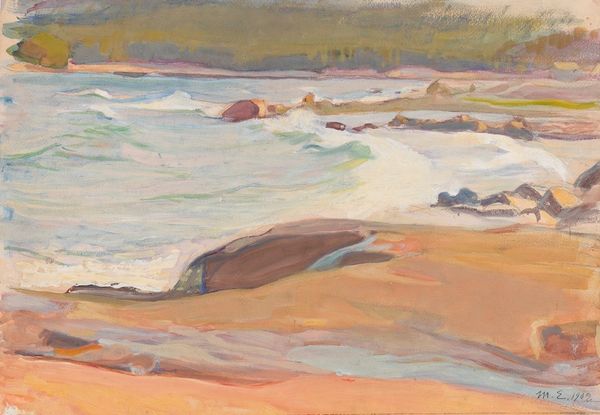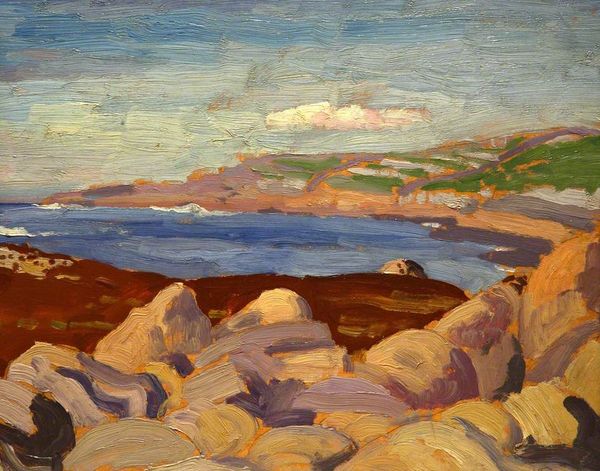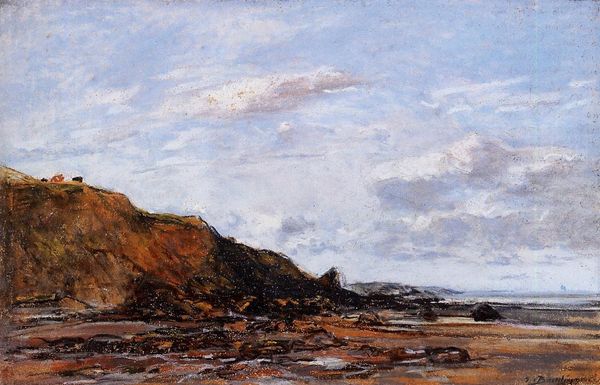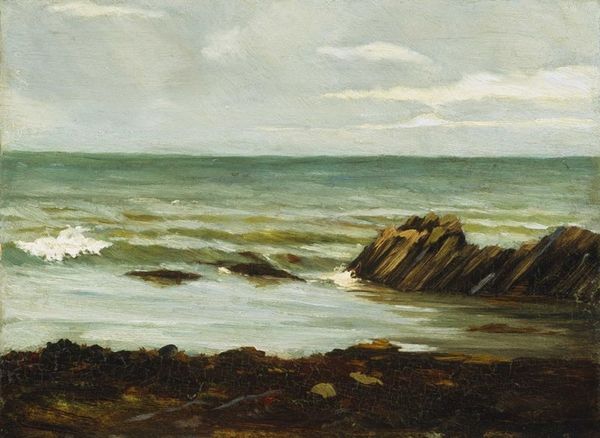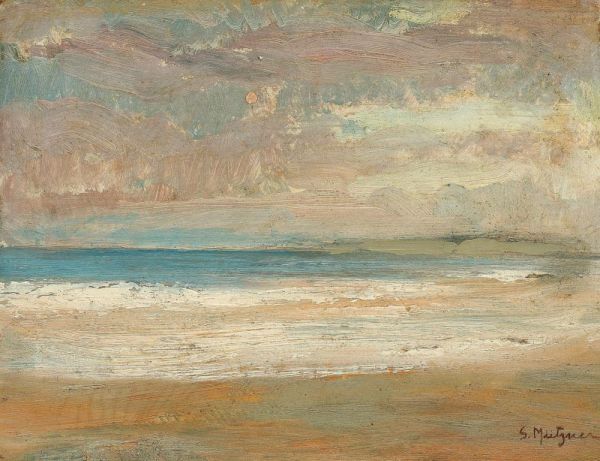
painting, oil-paint
#
sky
#
painting
#
impressionism
#
oil-paint
#
landscape
#
impressionist landscape
#
oil painting
#
ocean
#
seascape
#
natural-landscape
#
modernism
#
sea
Copyright: Public domain
Curator: Take a look at “Oarai”, an oil painting by Fujishima Takeji. This work seems to encapsulate a pivotal moment in the artist's stylistic development. What's your immediate reaction to the piece? Editor: A sense of serene melancholy washes over me. The muted lavender tones, combined with the stark rocky outcrops, create a very somber but beautiful effect. It feels still and timeless. Curator: That somber mood may be partly a reflection of the cultural moment. We must consider that Fujishima was engaging with Western art movements—particularly Impressionism—while grappling with his Japanese identity and a rapidly modernizing nation. There's a deliberate choice to represent the landscape in a style accessible to the West, almost acting as a bridge. Editor: Absolutely. Formally, it’s a fascinating study in contrasts: the roughness of the rocks against the smoothness of the water and sky. The impasto technique on the rocks gives them a palpable weight, rooting the painting, while the blended sky feels ephemeral and boundless. It uses light not to define objects, but to express emotion. Curator: Precisely, and that emotional expression often took the form of nostalgic reflections on pre-industrial Japan, as well as longing for Western influences that didn't override national identity. Japanese intellectuals navigated modernization by referencing the natural, the enduring landscape, using paintings like this as cultural touchstones, of sorts. Editor: Thinking about those cultural complexities really adds another layer. However, what resonates is the power of this painting's internal language; a study of shapes and colours, a balancing act between solid earth and boundless sky. Curator: It's this duality that probably captivated viewers both then and now. Its ability to be a mirror for introspection, reflecting personal as well as collective struggles of that historical period. Editor: Well, this has been unexpectedly thought-provoking, a deep-dive beneath a tranquil surface! Curator: Indeed! A quiet scene holds turbulent depths, waiting to be understood.
Comments
No comments
Be the first to comment and join the conversation on the ultimate creative platform.
